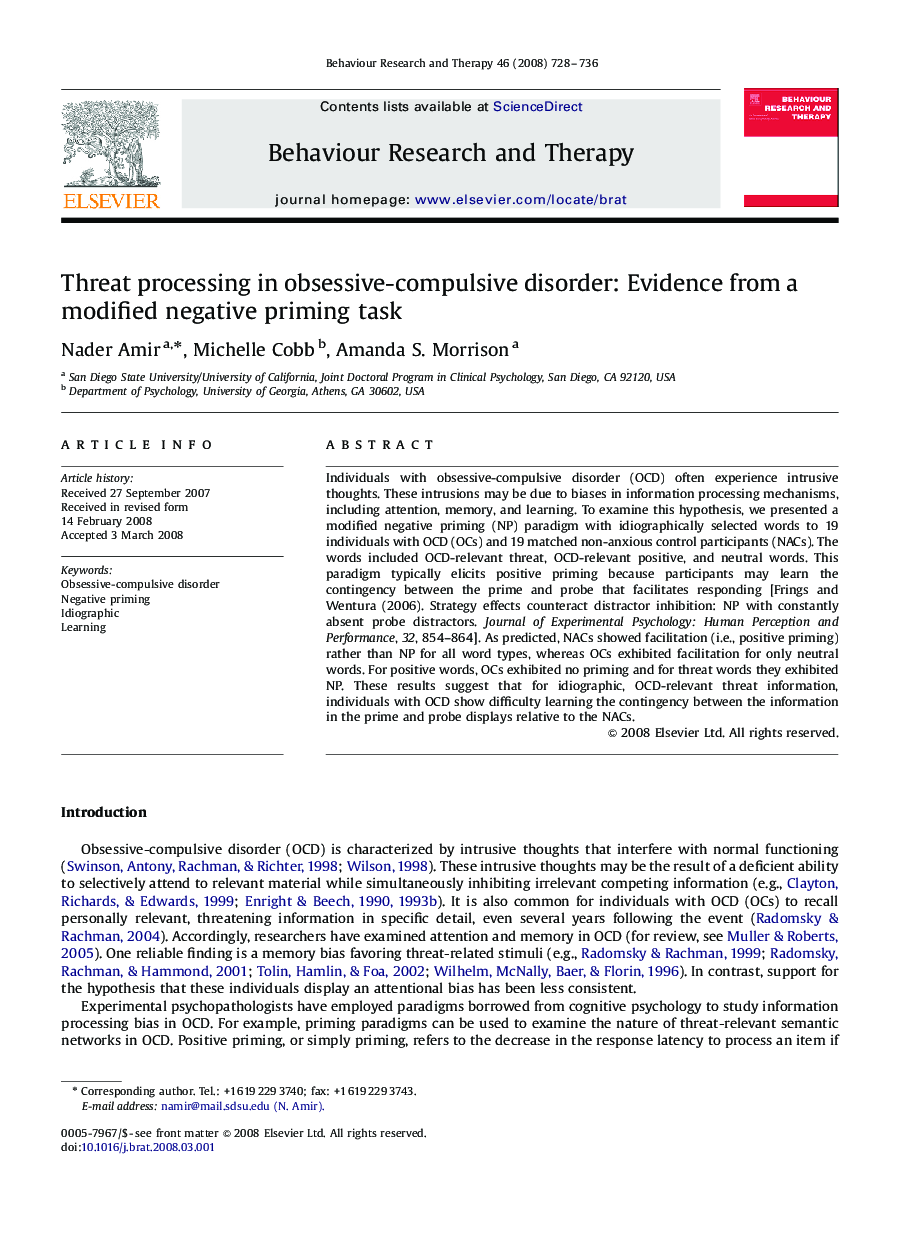| کد مقاله | کد نشریه | سال انتشار | مقاله انگلیسی | نسخه تمام متن |
|---|---|---|---|---|
| 902414 | 916159 | 2008 | 9 صفحه PDF | دانلود رایگان |

Individuals with obsessive-compulsive disorder (OCD) often experience intrusive thoughts. These intrusions may be due to biases in information processing mechanisms, including attention, memory, and learning. To examine this hypothesis, we presented a modified negative priming (NP) paradigm with idiographically selected words to 19 individuals with OCD (OCs) and 19 matched non-anxious control participants (NACs). The words included OCD-relevant threat, OCD-relevant positive, and neutral words. This paradigm typically elicits positive priming because participants may learn the contingency between the prime and probe that facilitates responding [Frings and Wentura (2006). Strategy effects counteract distractor inhibition: NP with constantly absent probe distractors. Journal of Experimental Psychology: Human Perception and Performance, 32, 854–864]. As predicted, NACs showed facilitation (i.e., positive priming) rather than NP for all word types, whereas OCs exhibited facilitation for only neutral words. For positive words, OCs exhibited no priming and for threat words they exhibited NP. These results suggest that for idiographic, OCD-relevant threat information, individuals with OCD show difficulty learning the contingency between the information in the prime and probe displays relative to the NACs.
Journal: Behaviour Research and Therapy - Volume 46, Issue 6, June 2008, Pages 728–736